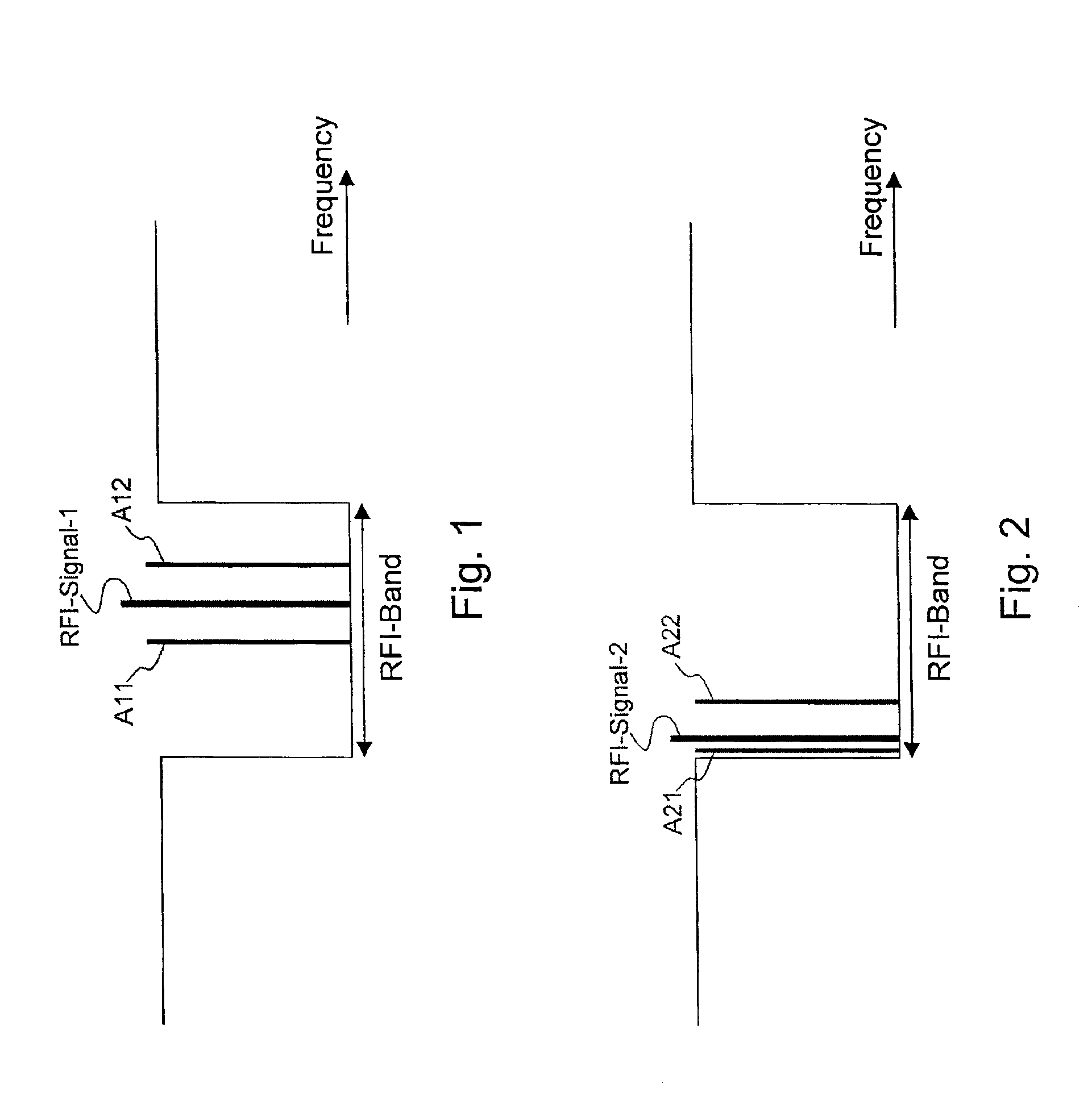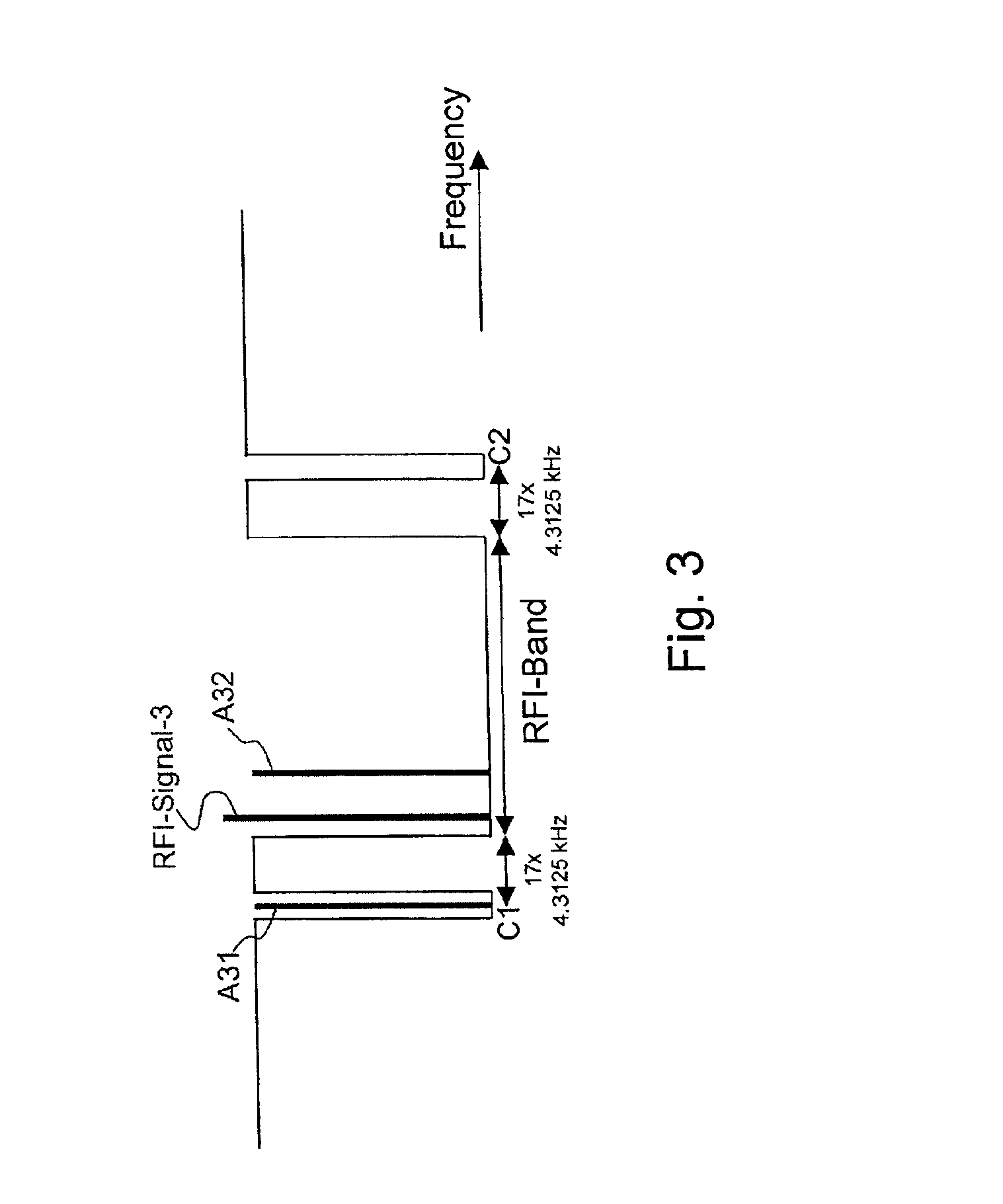Multi-carrier receiver with improved radio frequency interference canceling
a receiver and carrier technology, applied in the field of multi-carrier receivers, can solve the problem of lower maximum achievable capacity, and achieve the effect of increasing the minimum guaranteed capacity
- Summary
- Abstract
- Description
- Claims
- Application Information
AI Technical Summary
Benefits of technology
Problems solved by technology
Method used
Image
Examples
Embodiment Construction
[0016]FIG. 1 illustrates the operation of a prior art multi-carrier receiver. The receiver receives a multi-carrier signal containing for instance 1024 carriers modulated with digital data. The interspacing between two carriers equals 4.3125 kHz. Part of the carriers have frequencies inside the Radio Frequency Interference band, RFI-Band in FIG. 1. This RFI-Band is a predetermined, standardised frequency interval reserved for e.g. radio amateur transmission. To avoid disturbance of the radio amateur emission in the RFI-Band, the power spectral density of the multi-carrier signal within this RFI-Band should be −80 dB / Hz or −60 dB / Hz. This is drawn in FIG. 1, and implies that only a very limited amount of power and data bits can be allocated to the carriers having frequencies within this RFI-Band. The prior art multi-carrier receiver contains circuitry and software to roughly determine the location of a narrowband disturber RFI-Signal-1, e.g. a radio amateur signal, in the RFI-Band. T...
PUM
 Login to View More
Login to View More Abstract
Description
Claims
Application Information
 Login to View More
Login to View More - R&D
- Intellectual Property
- Life Sciences
- Materials
- Tech Scout
- Unparalleled Data Quality
- Higher Quality Content
- 60% Fewer Hallucinations
Browse by: Latest US Patents, China's latest patents, Technical Efficacy Thesaurus, Application Domain, Technology Topic, Popular Technical Reports.
© 2025 PatSnap. All rights reserved.Legal|Privacy policy|Modern Slavery Act Transparency Statement|Sitemap|About US| Contact US: help@patsnap.com



